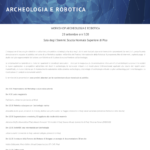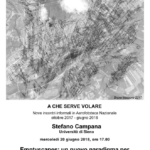A pre-requisite for the handling territorial data is knowledge about each measurement’s position in relation to a known system of geographical coordinates. Failure to satisfy this condition results in an inability to localise the acquired information.
The entry of the data into an archaeological GIS is the basis for any attempt at integration of the information so as to facilitate a critical narration of the local history or conservation of the archaeological resource.
Georeferencing of the remotely-sensed data does not represent the end of the archaeological mapping process but only an intermediate stage. On their own, aerial photographs or magnetic and geoelectrical maps signify little. It is the responsibility of the archaeologist (often in collaboration with specialists such as geophysicists) to give sense to the photographs or to the measurements of chemical and physical parameters in the soil.
In summary, the interpretation of the data is made real and communicable through cartographic restitution of the elements perceived as anomalies.
This is therefore the critical phase in landscape and archaeological research. In practice the process advances through the drawing, in a digital way as well as in a hand way, of the anomalies and other elements deemed to be of archaeological interest. Georeferenced graphical restitution of the information contained in vertical or oblique aerial photographs, in high-resolution satellite imagery, in LiDAR data and in maps derived from geophysical measurements allow us to
overlay on topographical maps the results of the various investigative methods, along with a mass of other data stratified layer upon layer over the years. The result is a jigsaw puzzle, a complex representation in which we can measure and position each piece of information while at the same time perceiving the overall picture, whether single-phase or spread across time, along with the overlapping and stratified fragments of whole systems of ancient and medieval landscapes.
Through archaeological mapping and the use of GIS these become capable of study against other layers of archaeological and non-archaeological information in the writing of history or in heritage protection through the planning process, through conservation or through monitoring of the shared cultural inheritance.

